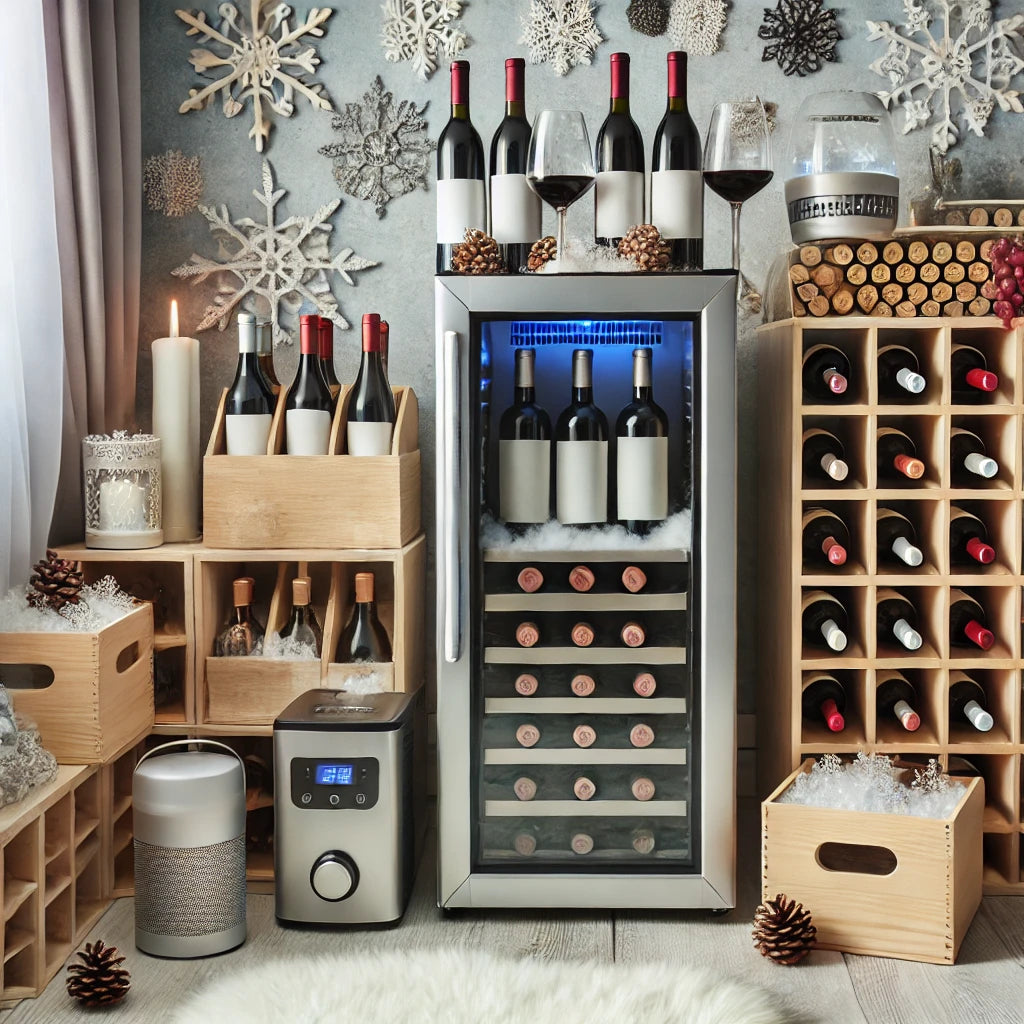
Winter Wine Storage Tips: Safeguarding Your Collection
As winter sets in, keeping your treasured wine collection at its best flavor and aroma can be a challenge. Conditions can swing both ways, impacting the quality of red wines and whites, so taking steps now will pay off with balanced, enjoyable pours later. These winter wine storage tips will help you keep your prized bottles safe and ready for savoring, from understanding the ideal temperature for white wine storage to everything in between.
Wine Storage Temperature: The Basis of Consistency
The crux of maintaining quality in wine is all about consistency. Maintaining a stable wine storage temperature is crucial, such as 55°F (13°C) for most varieties. This is widely considered the ideal temperature for wine storage, as it helps maintain the wine’s chemical balance. Generally, it's best to store white wines slightly cooler. If you’ve ever wondered what temp to keep wine, a general rule is around 45-50°F (7-10°C) for whites. Adjusting your wine fridge storage temperature accordingly ensures that your Chardonnay or Sauvignon Blanc retains its crispness and complexity.
How Should Wine Bottles Be Stored?
Do you want to know how to store wine bottles effectively? The best method is to store them horizontally in a cool, dark place with minimal temperature fluctuations. Proper storage of wine also means avoiding direct sunlight, which can cause premature aging. For long-term cellaring, consider storage for wine that includes specially designed racks or wine storage boxes. These containers prevent vibrations, control humidity, and maintain the temperature wine storage requires.
Best Storage of Wine in Winter
The challenge is maintaining that perfect climate when the winter weather comes. The drafts, central heating, and temperature swings outside are all against you. Here are a few tips on how to keep your wine bottles at their best during the colder months:
-
Stable Environment:
Keep your wine in a room with stable conditions. Avoid garages and attics where temperatures can dip considerably.
-
Insulated Storage:
One excellent idea to invest in is an insulated wine storage box, adding that extra layer of temperature control and protection against cold.
-
Wine Fridge Storage:
A dedicated wine refrigerator is the best place to store wine during extreme seasonal changes. Owning a wine refrigerator is beneficial as it allows you to adjust the temperature to suit your collection needs, ensuring that reds and whites are at their optimal condition.
How to Maintain Proper Humidity
Although temperature is the most important factor in wine storage, humidity plays a supporting role. Target 60-70% humidity to prevent corks from drying out. Dry winter air can be devastating, so using a small humidifier or choosing storage options that maintain a balanced environment helps keep the integrity of the wine intact.
Learn more about storage options.
Besides the right temperature and humidity, the storage materials should also be appropriate. Robust, well-designed containers ensure the ideal temperature to keep wine stored within those bottles. At WineShippingBoxes.com, we provide specialized wine storage boxes to help keep your bottles stable even under harsh winter conditions.
Conclusion
Mastering how to ship a bottle of wine or how to store it properly is very crucial for any wine enthusiast as winter sets in. Understanding the ideal temperature for white wine storage, implementing appropriate measures to maintain this temperature, and selecting the appropriate storage material will ensure your collection remains in excellent condition. All this advice and the best possible storage solution will keep your wines ready to satisfy your palate—winter after winter.

